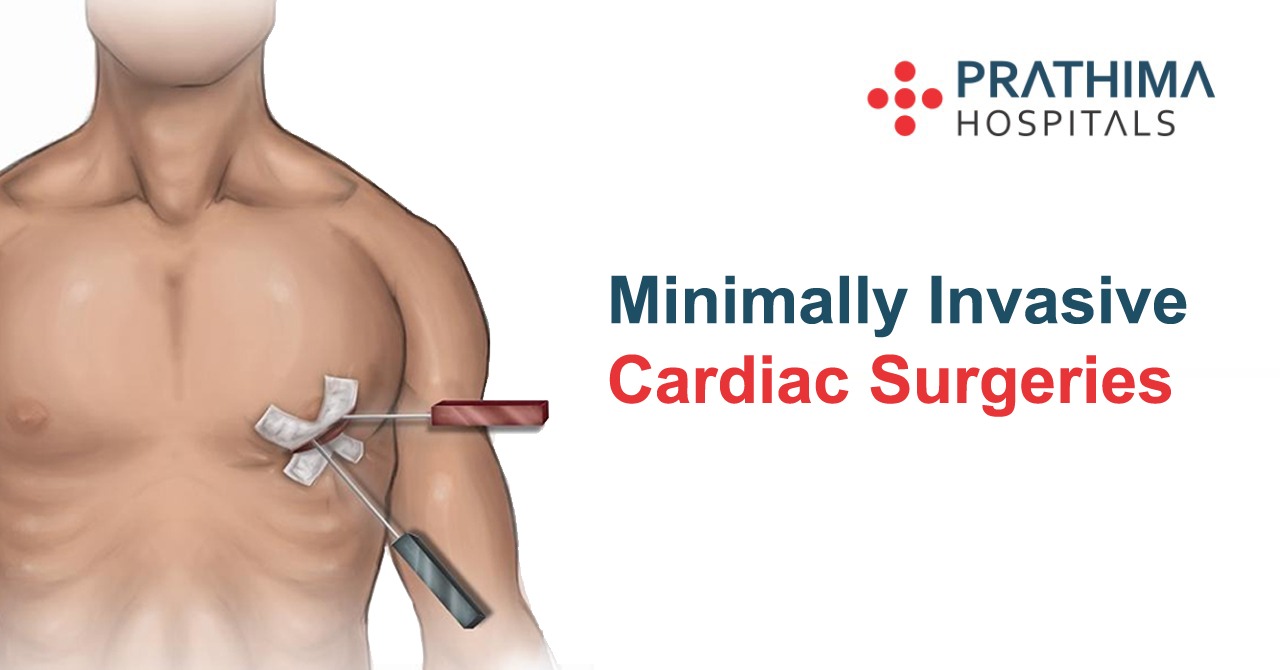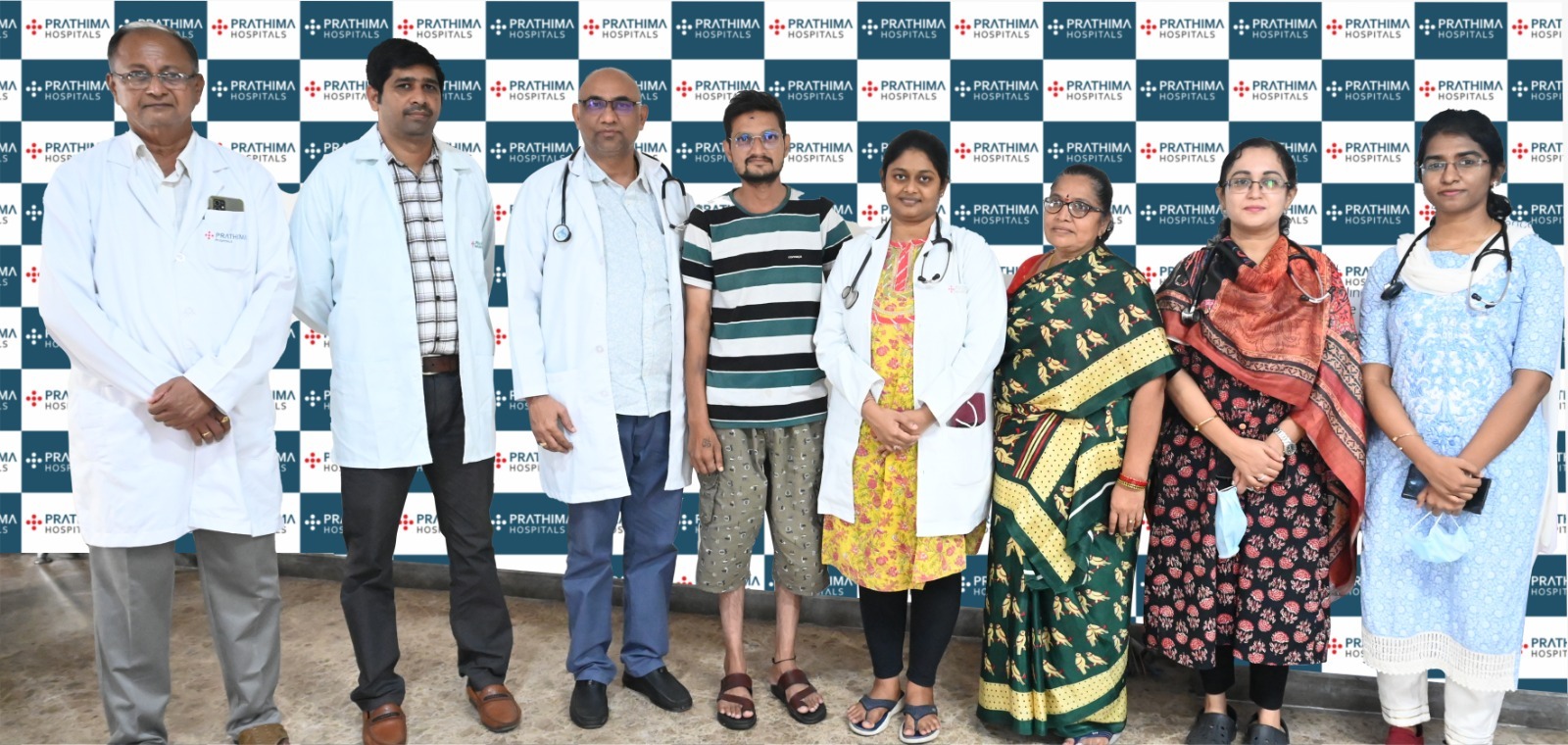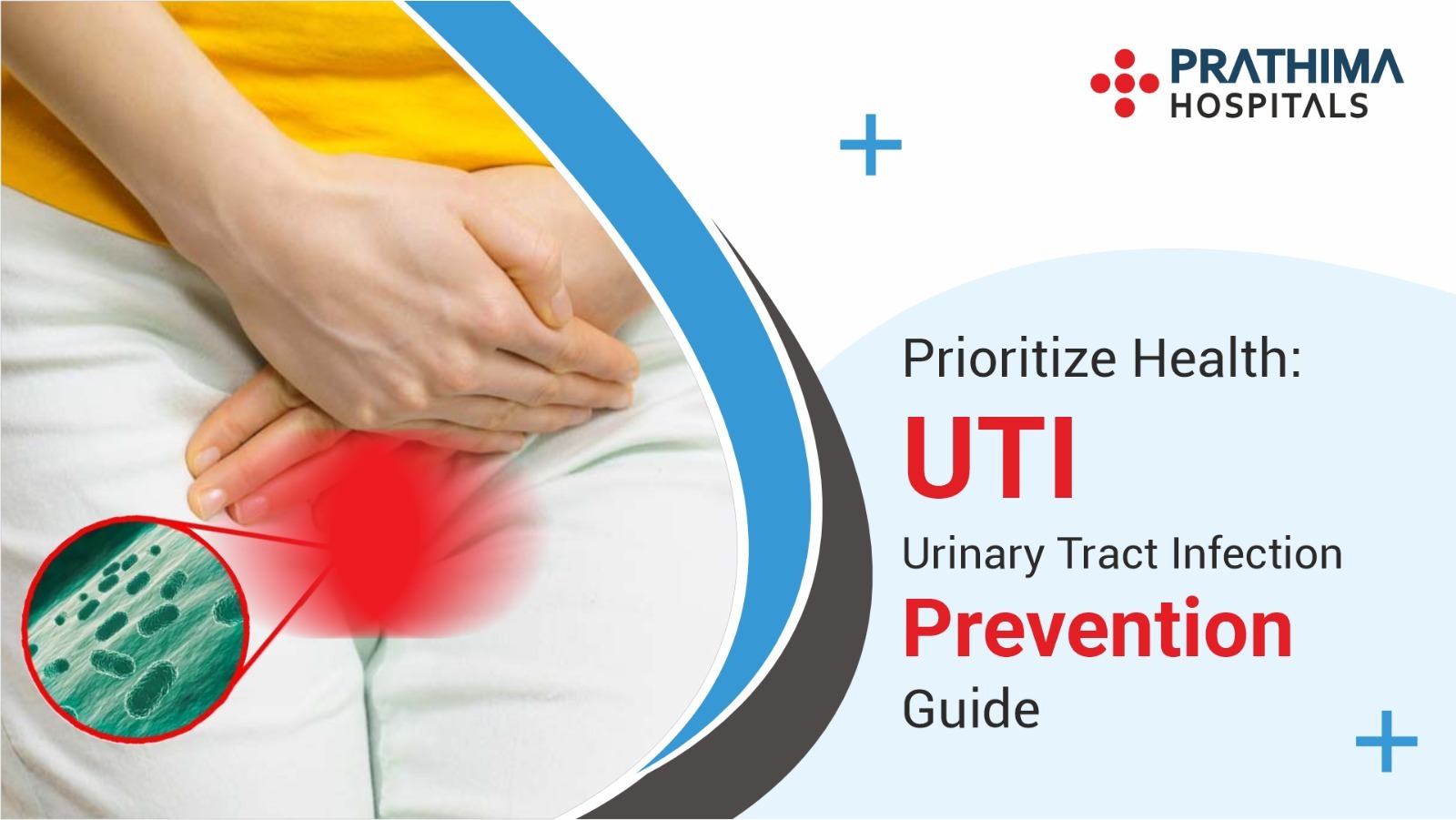Minimally Invasive Cardiac Surgery

Cardiac procedures were performed using open-heart surgery, in which the surgeon makes a large incision in the chest, with the advancement in technical procedures surgeons have developed a technique called minimally invasive cardiac surgery. In minimally invasive cardiac surgery, one or more small incisions are made between the patient’s ribs by the surgeon as this allows the surgeon to clearly see and access the internal areas and to make easy treatment.
Our surgical doctors perform many surgeries from minimally invasive coronary bypass surgery to patients needing intracardiac therapies for valvular problems, such as mitral valve regurgitation, patients needing surgery for arrhythmia problems all are treated. We also treat some of the rare conditions, such as pericardial constriction, tumors of the heart and adult congenital problems; these are all treated surgically without requiring the opening of the breastbone by using the minimally invasive approach.
Most cardiac operations in minimal procedures are performed through a sternotomy, in which they perform the splitting of the entire breastbone and the minimally invasive cardiac surgery encompasses various types of surgeries performed through incisions that are very thin and less traumatic than the standard sternotomy. In the minimally invasive incisions, it measures about 3 to 4 inches when compared to 8 to 10 sternotomy incisions, specialized instruments are used in performing the operations.
At Prathima hospitals, our surgeons are experienced in this advanced technique for open-heart surgery as is still necessary for certain procedures, we can perform many cardiac surgeries using a minimally invasive approach by using Thoracoscopic surgery. In thoracoscopic surgery surgeon inserts, a long lean tube named as thoracoscope contains a tiny high-definition video camera into a small incision in your chest.
After surgery our treatment team may monitor your condition and watch for signs of infection in your incision sites with continuous monitoring of blood pressure, breathing and heart rate and the treatment team will also work with you to manage the pain you may experience after surgery. Doctors instruct you to walk regularly to gradually increase your activity and to do breathing exercises as you recover and they ask you to follow instructions during your recovery, such as signs of infection in your incisions and by taking proper care, taking medications, and managing pain and other side effects after your surgery are to be taken care for fast recovery.
After minimally invasive heart surgery, you may have to improved the quality of life and reduced symptoms are observed. Your doctor will instruct you about when you can return to daily activities and to incorporate healthy lifestyle changes, such as working, driving, exercise physical activity, a healthy diet, and stress management into your life.
Services
As we are expertise in performing the minimally invasive cardiac surgery they are many producers and types of surgery are performed and we can observe some of the services we offered below
- Mitral valve repair and replacement
- Tricuspid valve repair and replacement
- Aortic valve replacement
- Atrial septal defect and patent foramen ovale closure
- Atrioventricular septal defect surgery
- Maze procedure for atrial fibrillation
- Coronary artery bypass surgery
- Left atrial mass and myxoma excisions
- Biventricular epicardial pacing lead placement
- Saphenous vein harvest for coronary artery bypass surgery
Procedures:
Minimally Invasive Cardiac Surgery
Most cardiac operations today are performed through a sternotomy, which involves splitting the entire breastbone. Minimally invasive cardiac surgeries possess a variety of surgeries that performed through incisions that are substantially smaller and less traumatic than sternotomy. In minimally invasive surgery the incisions are made by measure about to 3 to 4 inches compared to 8 to 10 sternotomy incisions, here specialized handheld instruments are used for these small incisions in performing the operations.
Minimally-Invasive Aortic Valve Replacement
In the minimally invasive aortic valve replacement surgery, it involves the opening of the aorta and removal of the diseased aortic valve leaflets as the calcifications around the valve must also be removed carefully as resulting valve ring or annulus is then measured to select the size of the valve prosthetic. Many numbers of sutures are then placed around the valve annulus and subsequently through the prosthetic valve. The valve is then lowered into the annulus and secured. The aorta is closed and the heart restarted. The total duration of the operation ranges from 2 to 3 hours.
Minimally-Invasive Mitral Valve Repair and Replacement
The mitral valve is a one-way valve comprised of two leaflets that conduct blood flow through the left side of the heart. When open, the mitral valve permits oxygenated blood from the lungs to fill the heart’s main pumping chamber, the left ventricle. When the left ventricle squeezes to deliver blood throughout the body, the mitral valve normally closes to prevent blood from flowing back toward the lungs. In case, the mitral valve cannot be performed successfully, Mitral valve replacement is another option. Mitral valve replacement involves removing the native mitral valve tissues and replacement of it can be done with an artificial valve.
Minimally-Invasive Atrial Septal Defect Closure
Minimally invasive approaches in atrial septal defect closure are done through a thoracotomy in which they made a 3-inch incision on the right side of the chest between the ribs. A heart-lung bypass is done with small tubes placed in the main artery and vein of the right leg through a 1 to 2-inch incision are made in the right groin crease. The heart is then stopped and the right atrium is opened to expose the ASD. At this point, specialized hand-held instruments are inserted through this small incision are made by the surgeon to repair the defect, the heart is then closed and restarted and then heart-lung bypass is discontinued and the incisions are closed.
Minimally-Invasive Mitral Valve Repair and Replacement
The mitral valve can be repaired by reconstructing the native valve tissues to restore normal valvular structure and function as the mitral valve is the most commonly repaired heart valve. The repair of the mitral valve is preferable to its replacement largely because native mitral valve is an intimately associated with the structure of the left ventricle, when repair of the mitral valve cannot be performed successfully, Mitral valve replacement is another option as mitral valve replacement involves removing much of the native mitral valve tissues and replacing it with an artificial valve.
Minimally-Invasive Mitral Valve Repair Techniques
The mitral valve can be repaired by reconstructing the valve tissues and by restoring them to normal valvular structure and its function, as the repair of the mitral valve is preferable to its replacement largely because a native mitral valve is an intimately associated with the structure of the left ventricle. In case, of failure in mitral valve replacement they apt another option of mitral valve replacement as it involves removing much of the native mitral valve tissues and replacing it with an artificial valve. The most common surgical approach to the mitral valve requires the surgeon to saw open the breastbone and spread the edges apart to gain direct access to the heart.
Minimally-Invasive Radiofrequency Ablation for Atrial Fibrillation
The advent of new surgical technology now permits cardiac surgeons to perform procedures based on the Cox-Maze principles through much smaller incisions made between the ribs on each side of the chest without using the heart-lung machine. By using a fiber-optic camera to visualize the heart through these small incisions, a series of lesions are made on the outside of the heart using various types of energy such as radiofrequency, freezing, or ultrasonic energy. These lesions destroy small regions of atrial tissue in areas that give rise to or conduct the aberrant electrical impulses that cause atrial fibrillation.
Prathima Hospitals Expertise
Minimally invasive cardiac procedures performed regularly by our Prathima hospitals and we are expertise in the following cardiac surgeries as they include:
- Implantation of ventricular assist devices
- Epicardial pacing to boost the pumping action of the heart in heart failure cases
- Procedures to treat congenital heart conditions
- Single and multiple vessel coronary artery bypass surgeries
- Surgery to correct atrial fibrillation, a common type of arrhythmias.
- Valve repair and replacement to restore proper valve function.
- Mitral valve repair and replacement
- Tricuspid valve repair and replacement
- Aortic valve replacement
- Atrial septal defect and patent foramen Ovale closure
- Atrioventricular septal defect surgery
- Maze procedure for atrial fibrillation
- Coronary artery bypass surgery
- Left atrial mass and myxoma excisions
- Biventricular Epicardial pacing lead placement
- Saphenous vein harvest for coronary artery bypass surgery
Our Prathima hospitals perform minimally invasive heart surgeries in the hospital feature with sophisticated diagnostics, surgical suites by leading-edge medical technologies and state-of-the-art imaging capabilities. The operating rooms are united with the surgical suite and the cardiac catheterization lab, enabling surgeons and interventional cardiologists to perform multiple procedures in one setting and treat more than one type of heart problem at the same time. For example, a patient who needs mitral valve repair and bypass surgery can have both problems treated during the same operation without opening the chest.
Minimal invasive approaches have transformed surgery in many medical fields. By recognizing the value of these benefits, the Cardiology department of our hospitals offers minimally invasive surgery to patients with cost-effective benefits and make their life easier and healthy.



